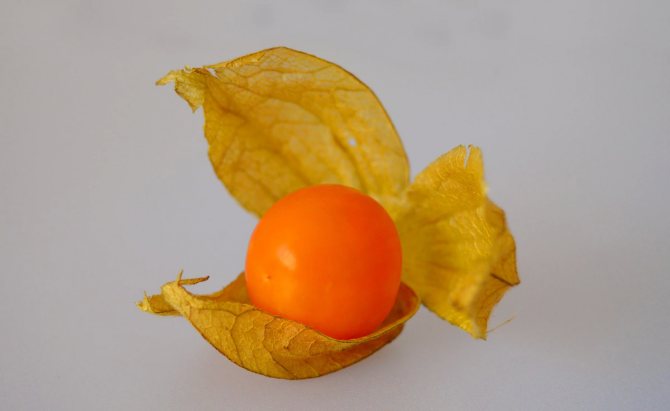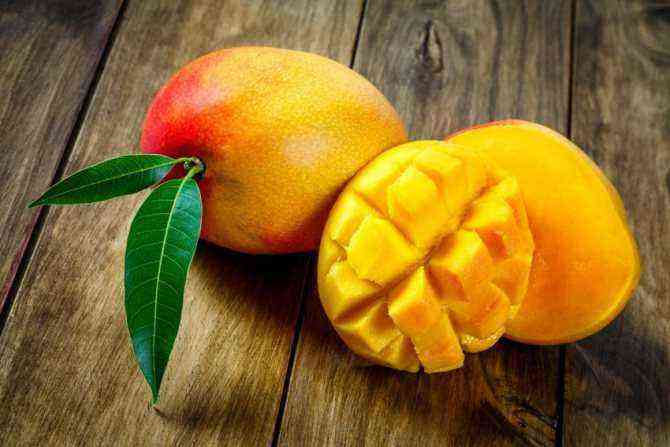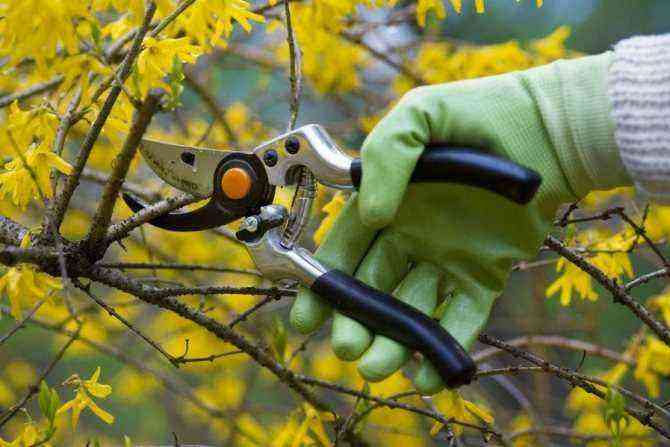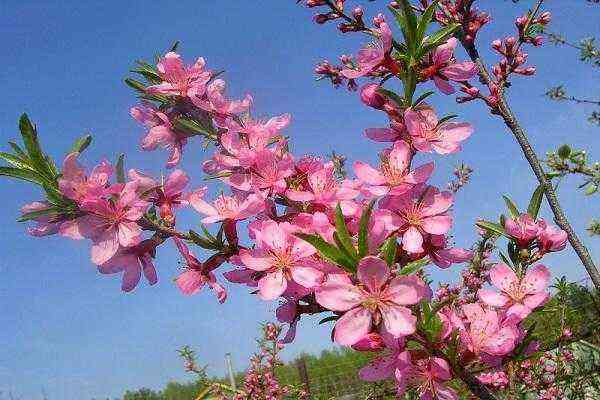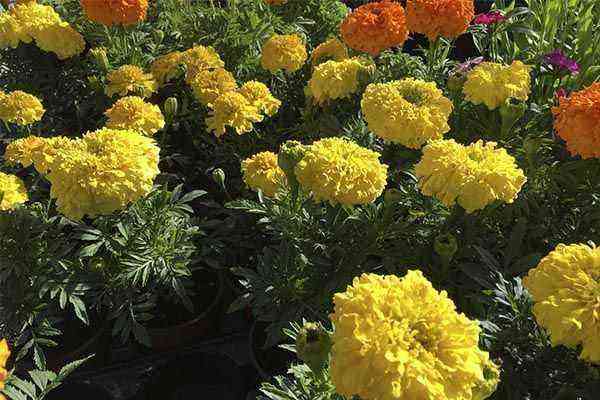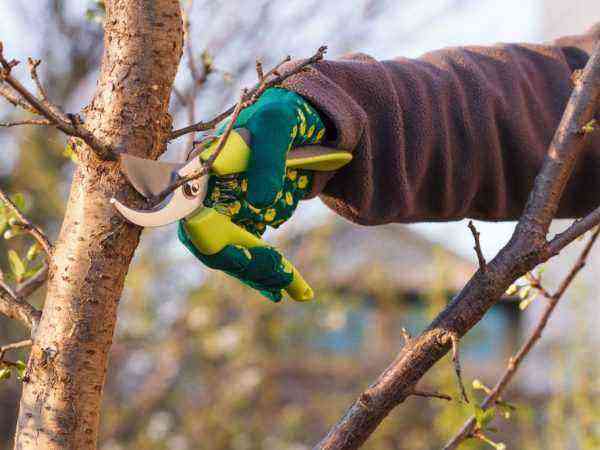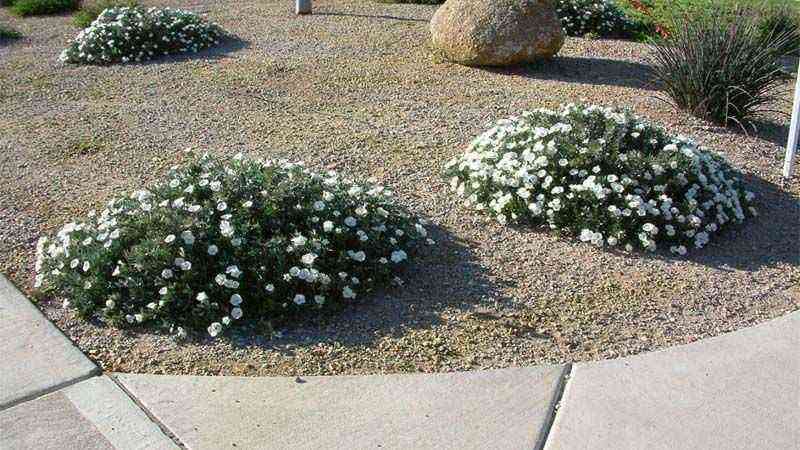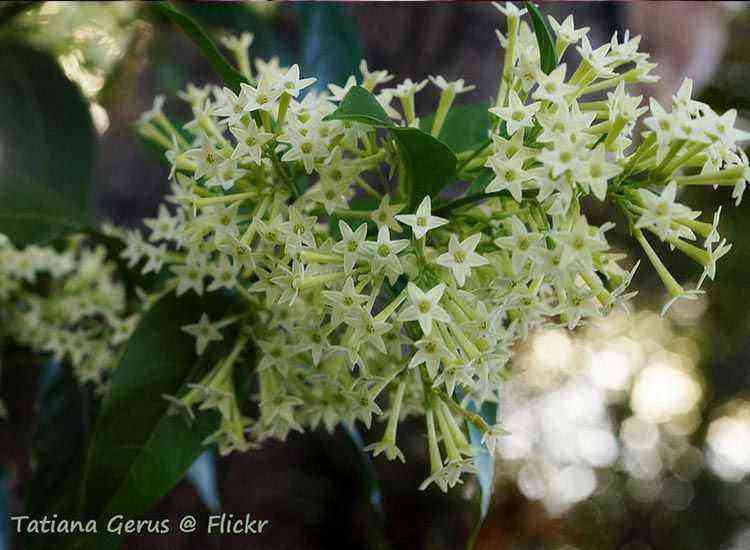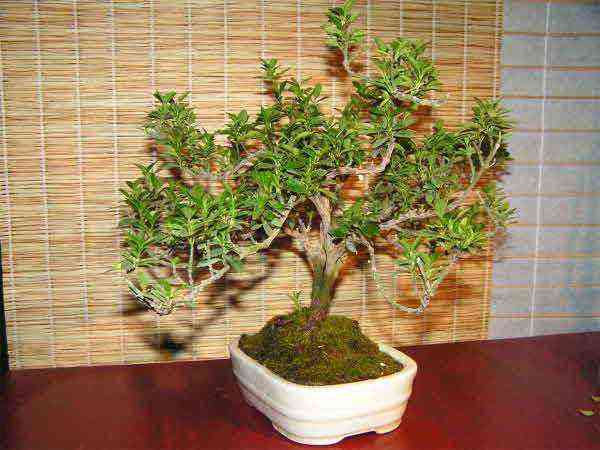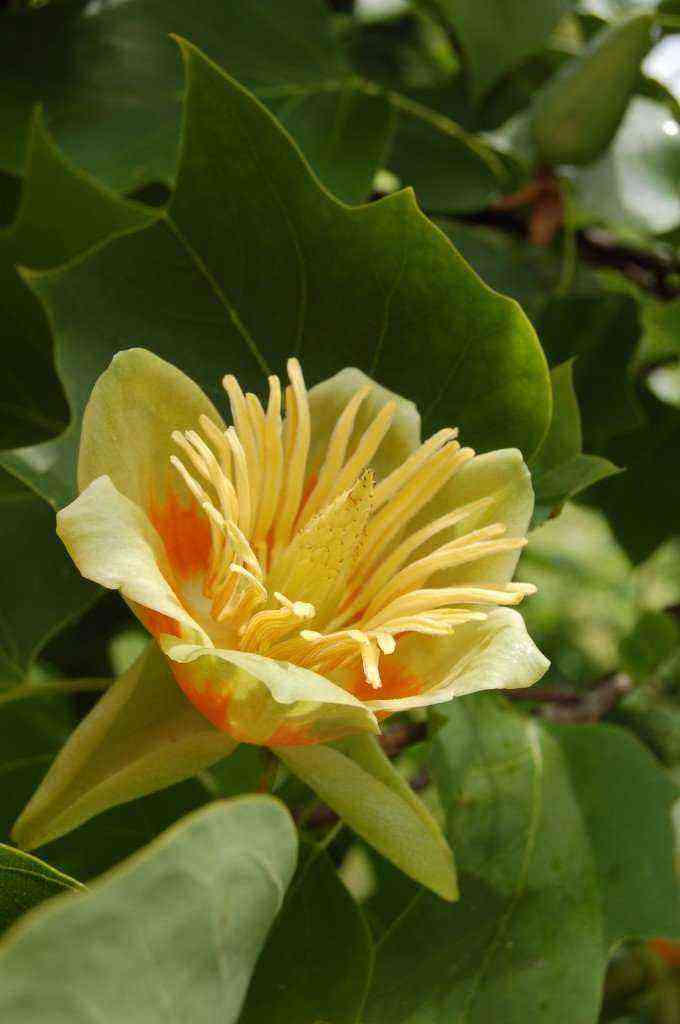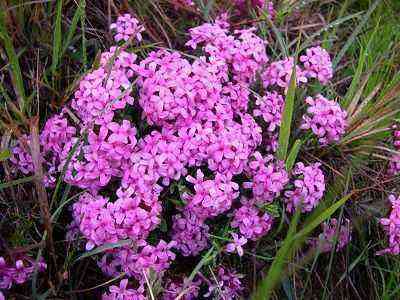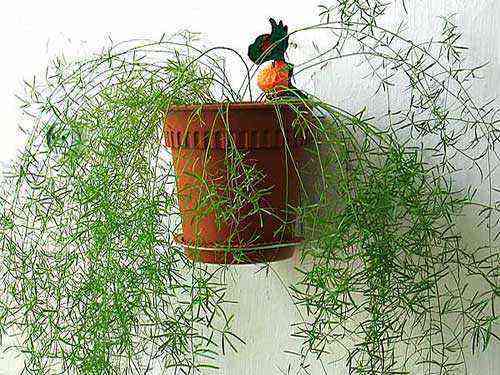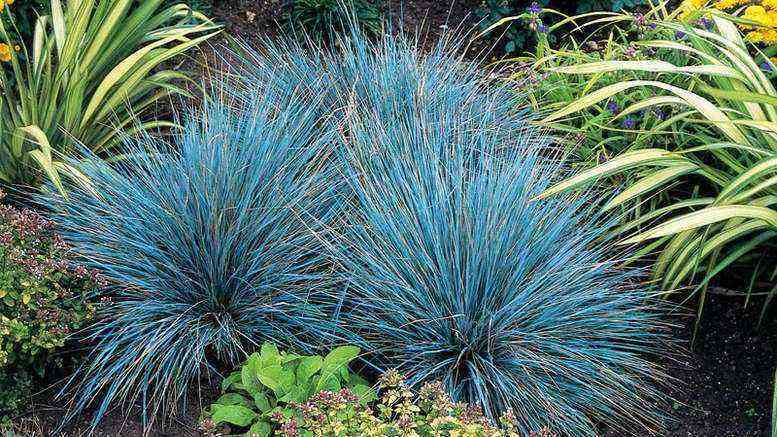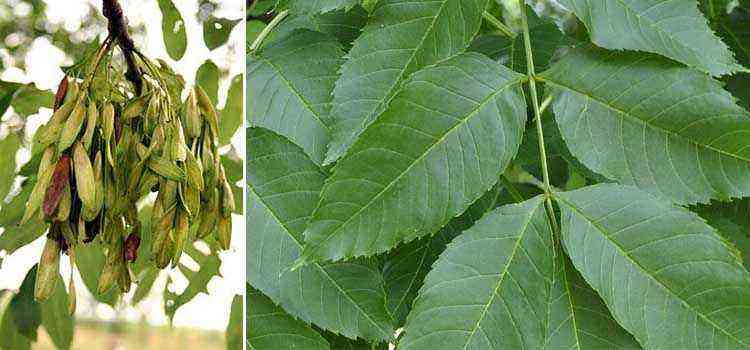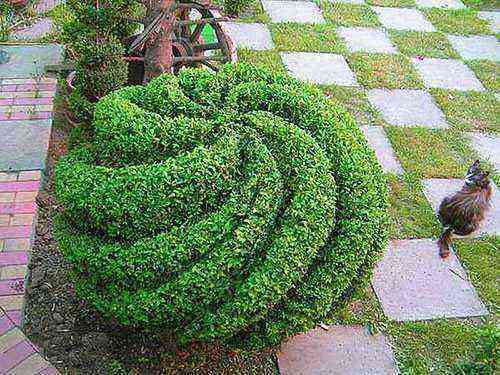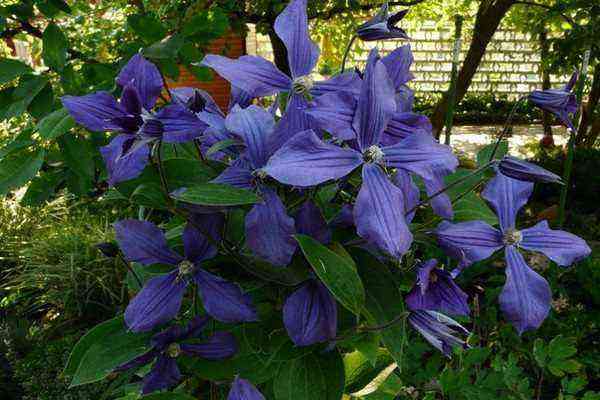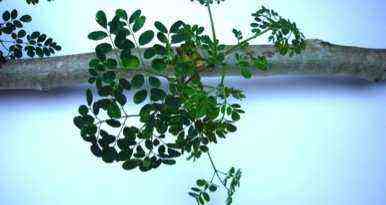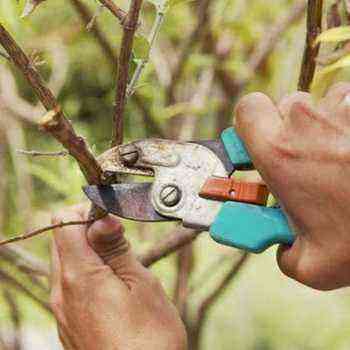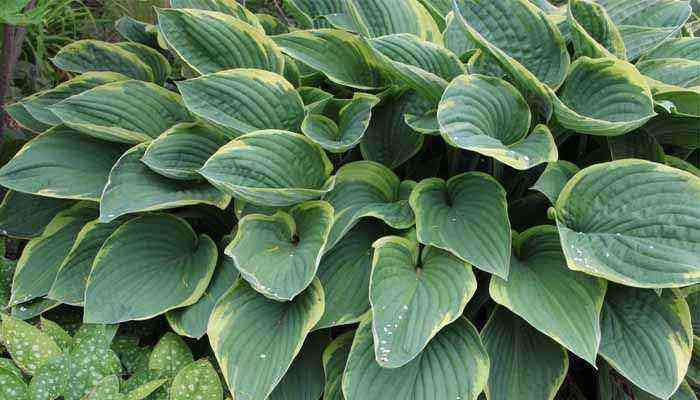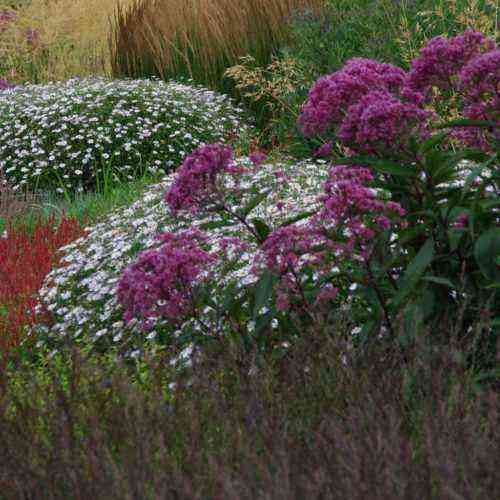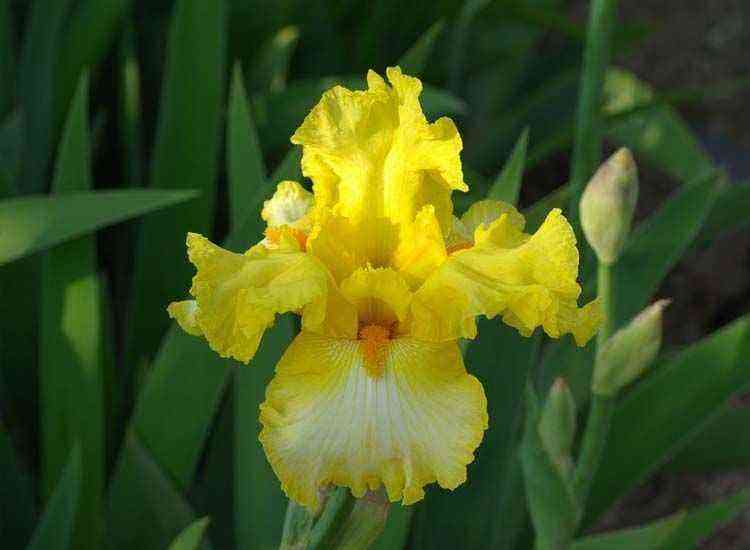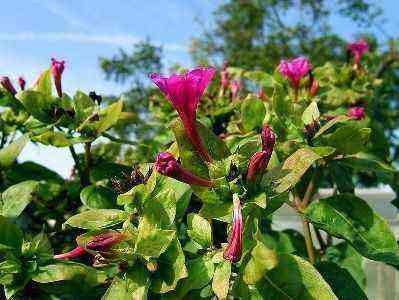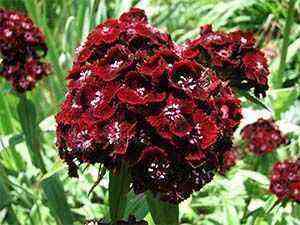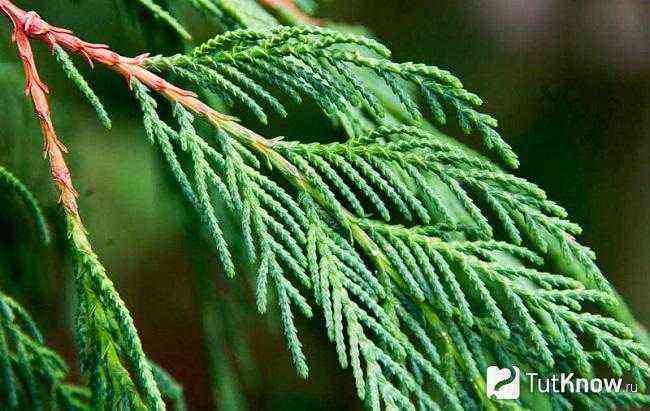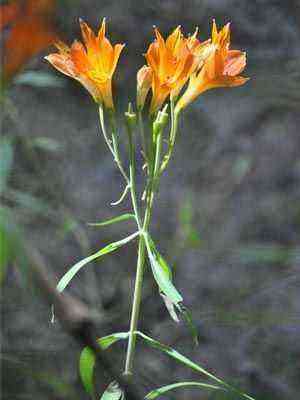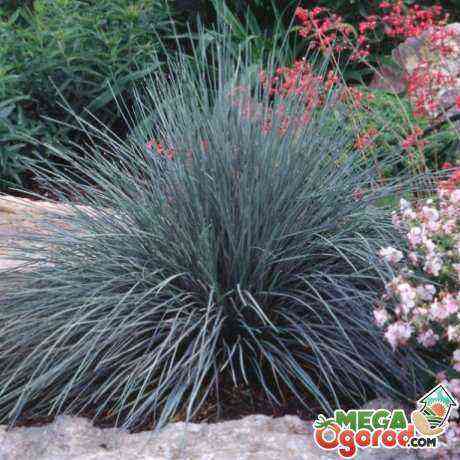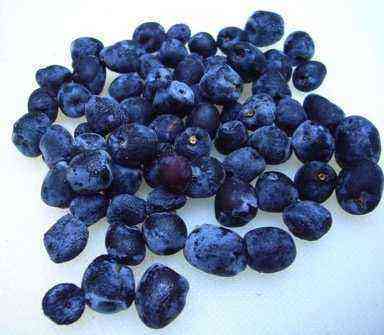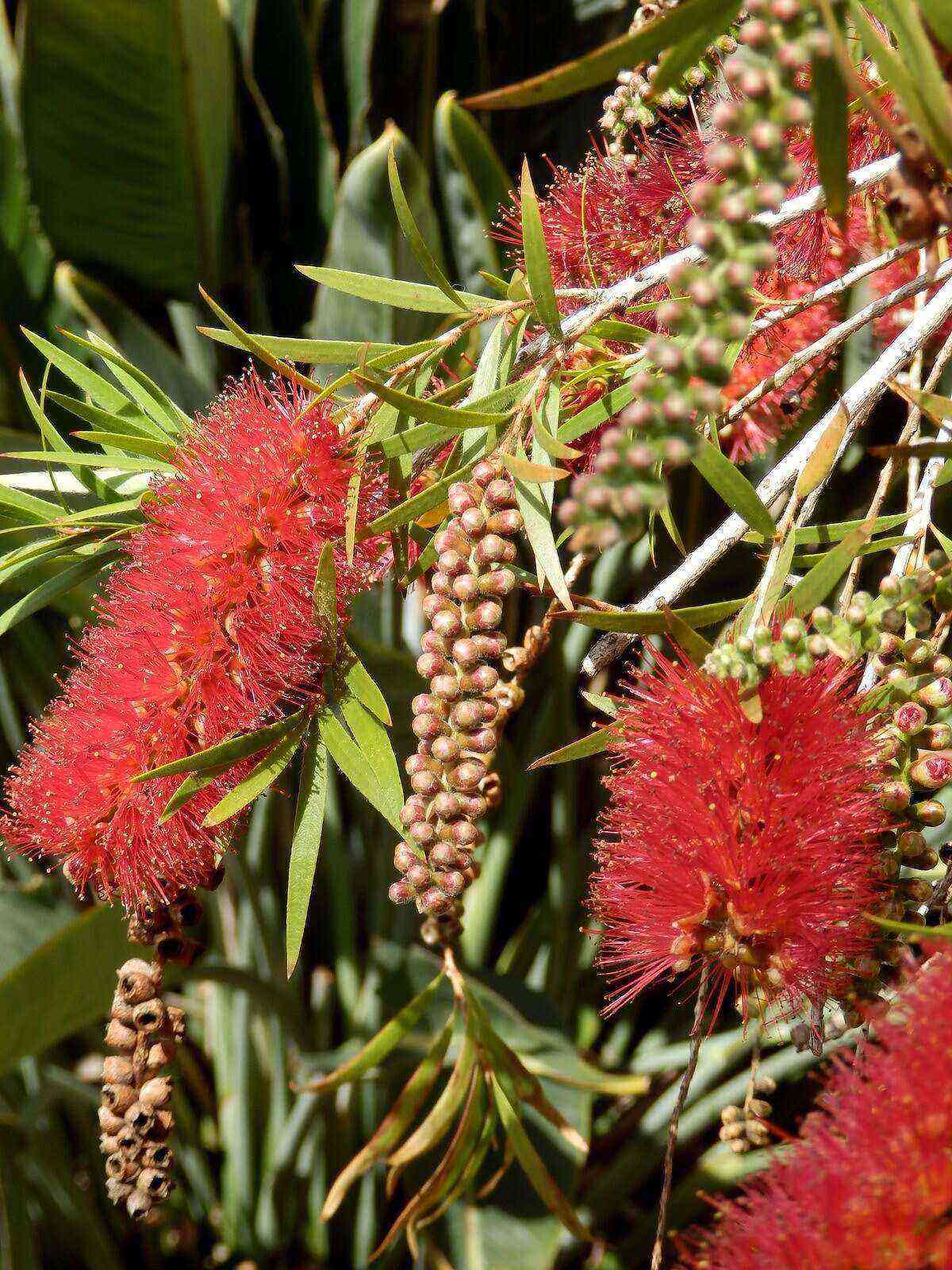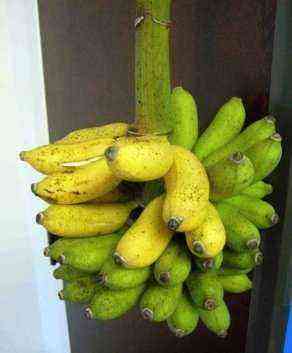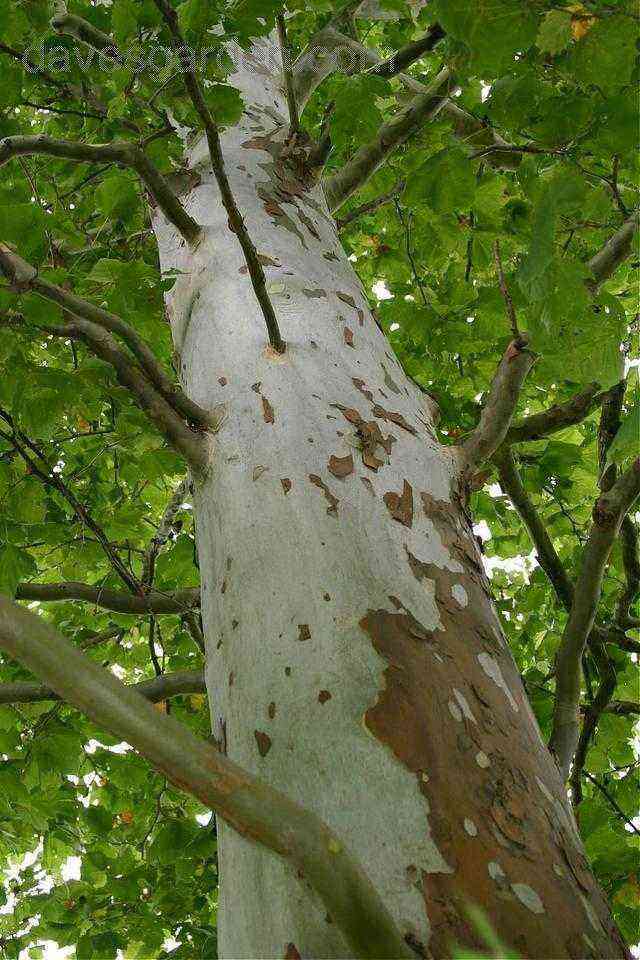It is no coincidence that it is called the “king of fruits”, because it contains more than a dozen amino acids, vitamins, zinc, potassium. Its fruits heal the nervous system, have a positive effect on memory and sleep.
Wood-long-liver
The mango tree is a perennial plant of rare beauty. In nature, its height can be 30 meters, and the roots reach six meters. Large leaves are similar to palm leaves, branches are flexible and resilient. The tree is capable of growing and producing crops for as long as 300 years.

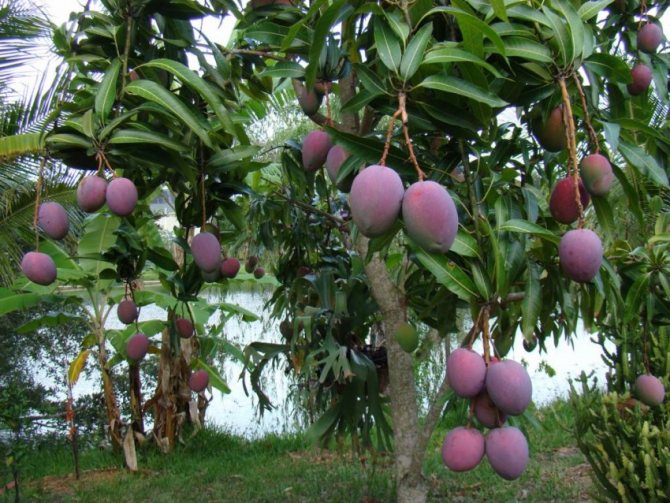
Mango blooms in February-March. The aroma of its delicate yellowish flowers, forming large inflorescences, resembles the smell of lilies. The fruits are large, varied in shape. The skin of the fruit is quite dense. And under it is a bright yellow juicy pulp, in which a flat bone is hidden.
How mango grows in nature
From its historical homeland – India, the mango tree has settled in the countries of South and East Asia, East Africa and the state of California. A heat-loving plant is terrified of a drop in temperature and may die at +5 degrees Celsius.
The mango tree is a beautiful plant with spreading branches and large green leaves. Under natural conditions, it reaches up to 20 meters in height, overgrown with a wide rounded crown. The roots of the tree go into the ground to a depth of more than 5 meters, which provides constant access to moisture and nutrients. During the flowering period, numerous delicate flowers appear on the branches. After they fall, filamentous panicles remain on the branches, in place of which 2 or more fruits grow. Mango is a real long-liver, the plant can grow and bear fruit for 300 years.
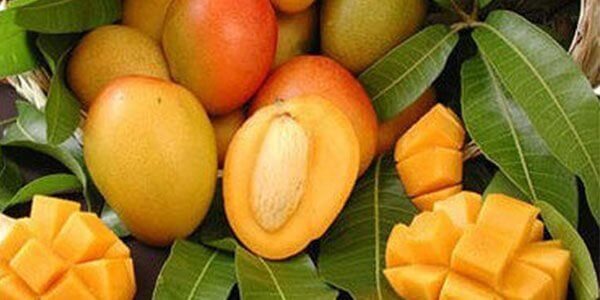
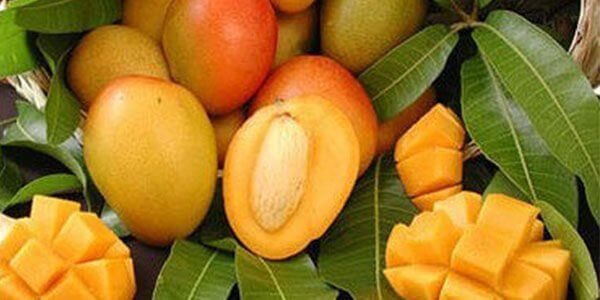
Fruits reach sizes ranging from 5 to 22 cm in length and take on a wide variety of shapes (flattened, ovoid or curved). The peel has a persistent green or yellow color and an overflowing red tint on the sunny side. The weight of the fruit depends on the variety and ranges from 250 to 750 grams. As it ripens, the fruits hang slightly on the long branches of the predecessor flowers. One gets the impression that the fruits are suspended on strings and decorate the tree. A bright orange pulp is hidden under a dense elastic skin, carefully preserving a large bone.
Mango tree – home decoration
Is it possible to grow a mango tree from a bone at home? Of course, if you have time and patience.
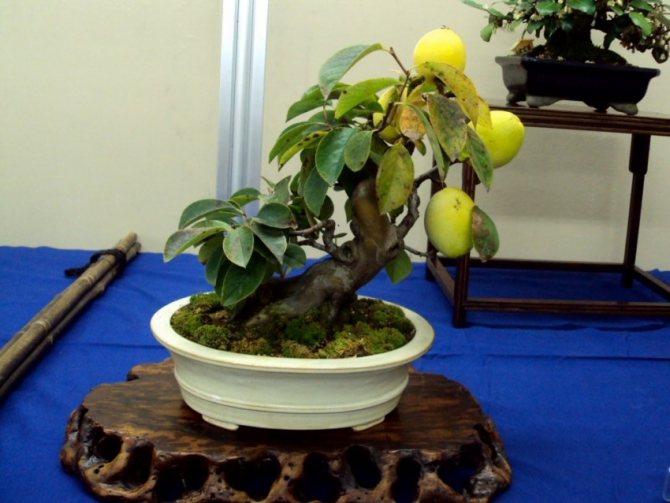

The efforts spent will pay off a hundredfold: a luxurious tree will not only decorate the house, but also heal the atmosphere, have a beneficial effect on the health and mood of all family members.

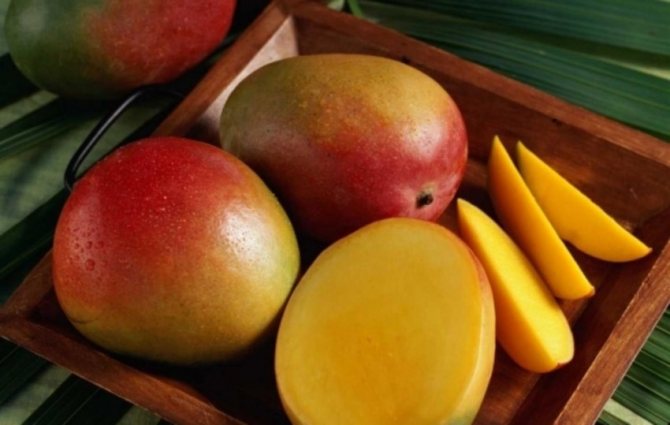
A few tips for wood care
Place the mango in a well-lit area, including direct sunlight. Poorly lit space for a tree is destructive.

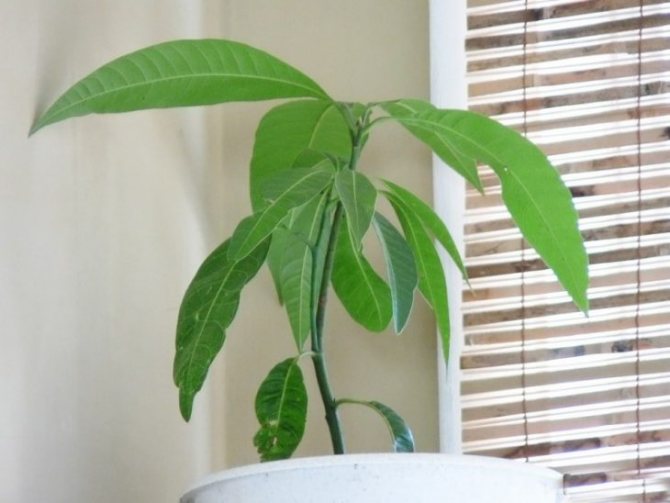
Even in winter, the daylight hours for your tropical pet should be at least 12 hours. Use a fluorescent lamp.


Once installed, do not transfer the tree – it does not like this. Therefore, it is important to choose the right place from the very beginning.


Maintain the temperature at + 20-26 degrees.
Water twice a week. The soil should not be dry or wet – only wet. Let the water preheat and settle.
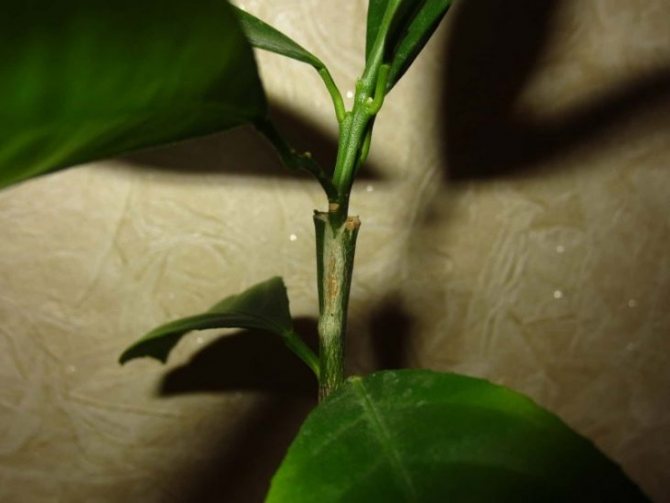

Spray the leaves, keep the air humidity at 80%. To do this, you can put bowls of water around the mango.

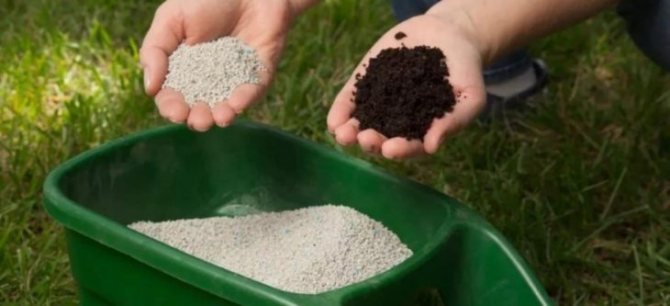
Feed with humus.

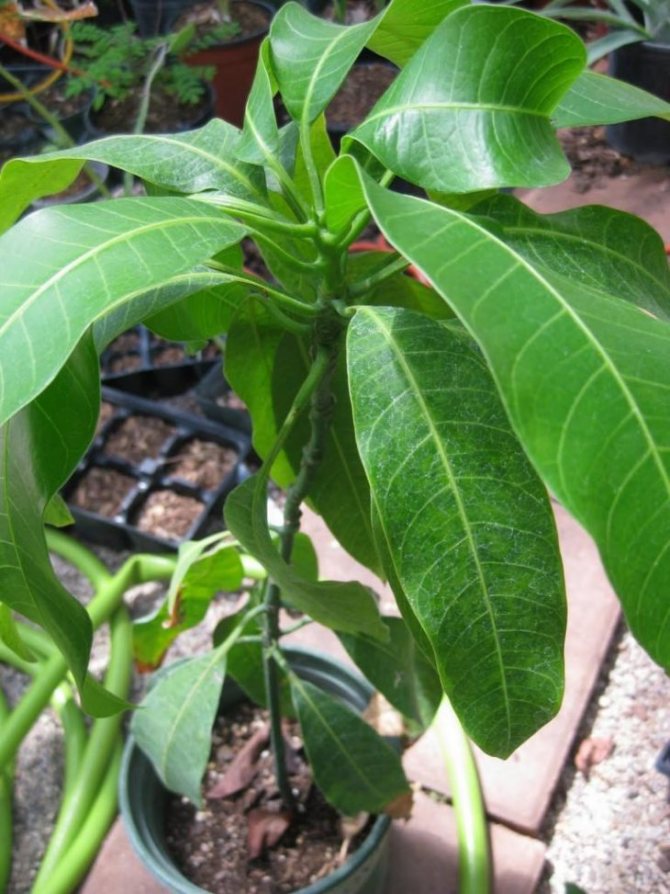
Tropical plants are capricious, but if the owner is attentive to them and spares no time, then they will live a long time. Getting a mango to bear fruit is harder, in any case it takes patience.

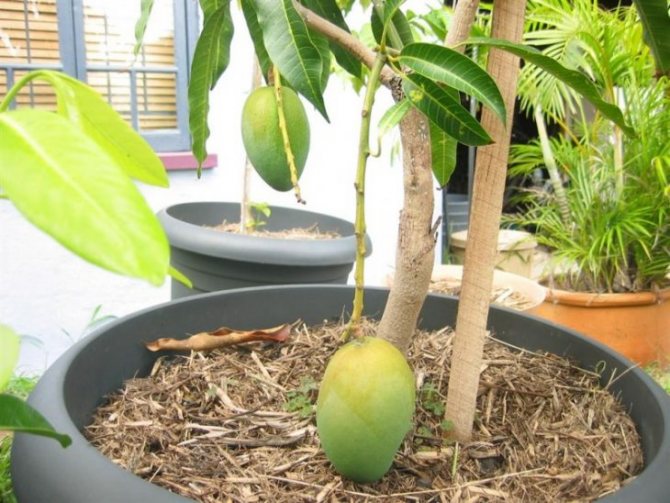
The tree begins to bloom naturally only at about the sixth year of life. But there is also a faster way: you can graft a bud from a fruiting plant – and then the fruit can appear in two years.
Mango growing methods at home
For home conditions, not any varieties are suitable, but only dwarf ones, and the plant itself must be grafted. There are many ways to grow mangoes at home. The easiest way is to purchase seedlings in a nursery, place them in specially prepared soil and arrange proper care.
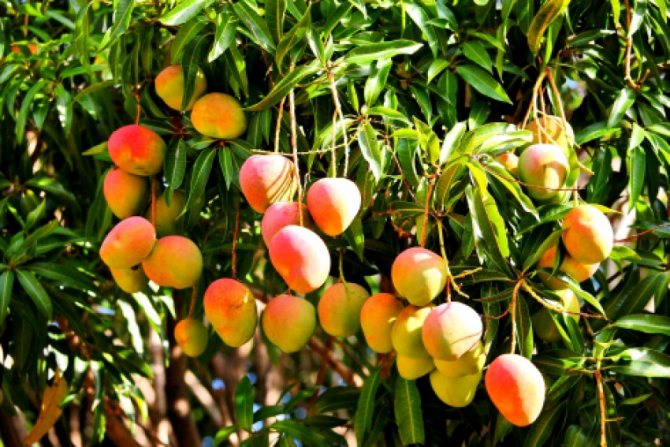
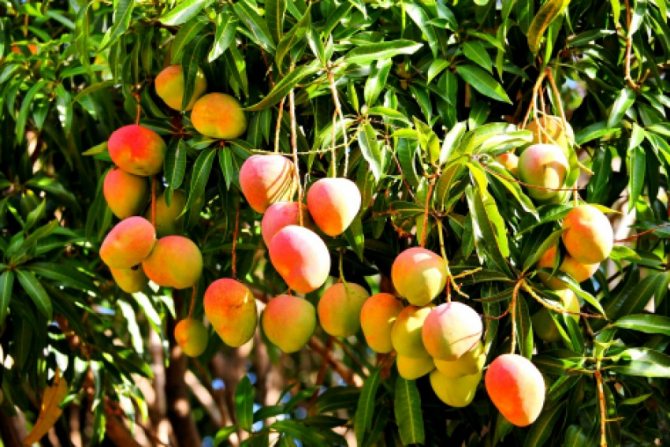
But the second method is somewhat more difficult – to germinate the bone itself. We’ll have to look for the “correct” fruit in the store.
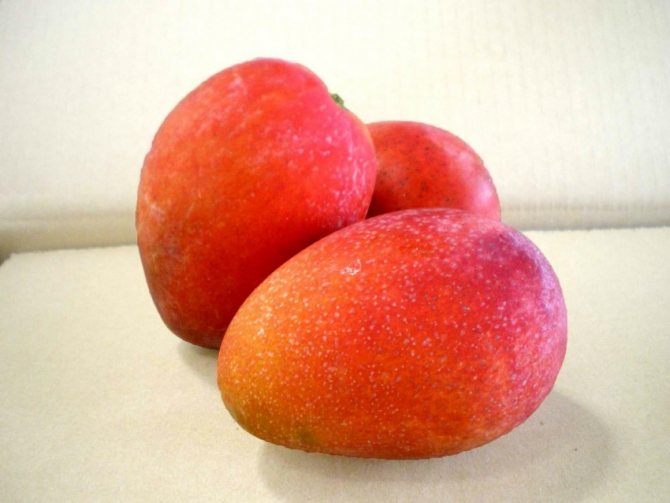
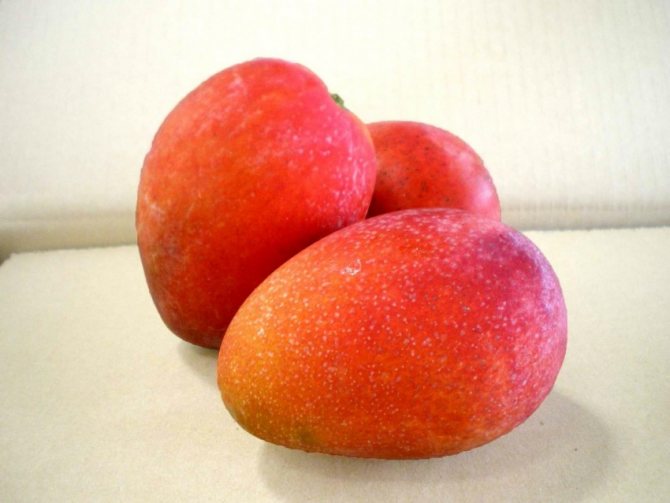
Can you get fruits at home?
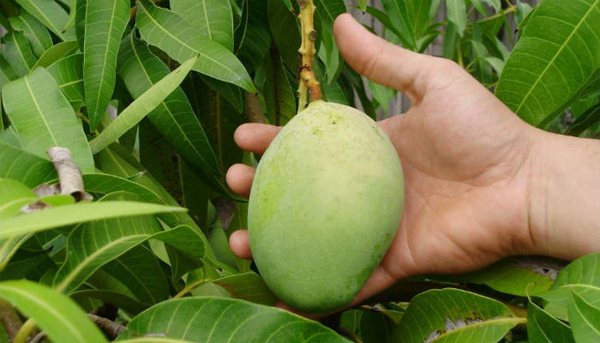

With proper care, an unvaccinated tree can bloom in 6 or more years. The grafted plant blooms for 2 years, most often in early spring.
The fruits ripen in 3-3,5 months, and sometimes even 6 months after the flowers wither. The taste qualities of the parent tree may not be transmitted, since at home it is very difficult to provide the plant with the necessary microclimate.
Mango grown from seed is most often used for decorative purposes. In order for the plant to bloom and probably bear fruit, grafting is required.
It is carried out in the second year of the tree’s life, when the trunk of the mango reaches the diameter of a pencil. The best time to get vaccinated is mid to late summer.
For this, a kidney is taken from a fruiting mango, which is cut off with a sterile knife along with a piece of bark and wood. On a tree grown from a bone, a T-shaped incision is made in the lower part of the trunk, the bark is folded back and a kidney is placed there. The vaccination site is wrapped with tape or electrical tape.
The grafted tree is covered with a bag, having made holes in it for ventilation, and transferred to a bright and warm place.
Leaves and shoots below the graft site are removed when it is clear that the graft has been successful.
You can also graft the mangifer with a handle. In this case, the top of the tree and the base of the cutting are cut at the same angle, the cuts are aligned and fixed with electrical tape, tape or grafting tape. Also, the stalk can be inserted into the cleft.
After a successful vaccination, the mango bears fruit after 2 years. If flowering begins earlier, the buds are removed, since early fruiting weakens the tree and has a bad effect on further yields.
How to do it?
The color is not worth paying attention to: green mango may also be suitable. It is necessary to test the elasticity of the fetus by lightly pressing on it. It should not be rigid and deformed. When inspecting a mango, make sure its skin is free from stains, even, and free from scratches.
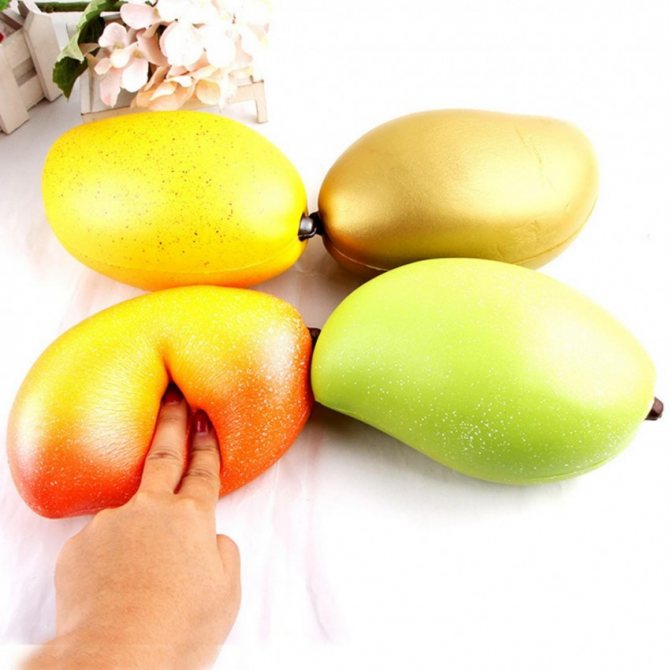
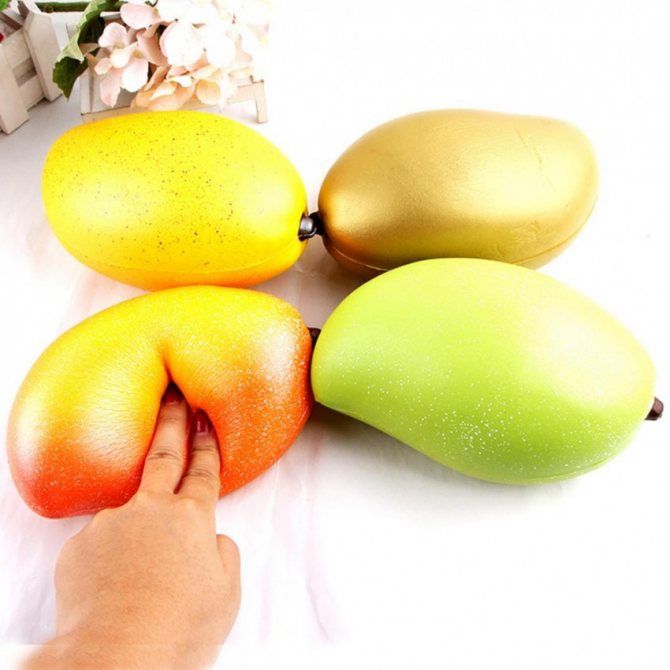
It will not be superfluous to smell the fruit. A sweet smell is a sign of maturity. But the smell of alcohol should alert you: perhaps fermentation has begun.

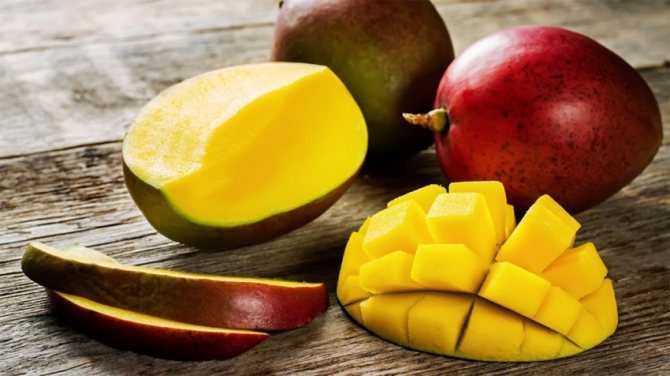
Opening the bone. Semen extraction.
Take out a fresh bone from the ripe fruit. For this purpose, the fruit is cut, the kernel is cleaned and washed well. Next, you can try to take out the seed. We do this with a knife very carefully. The seed resembles a large bean. There may be several embryos. We choose the smoothest, greenest. It will germinate for sure.
It is better not to break the hard shell, otherwise damage to the sprouts is possible. We put a too hard bone in a jar of water and set the container in heat. We change the water periodically.
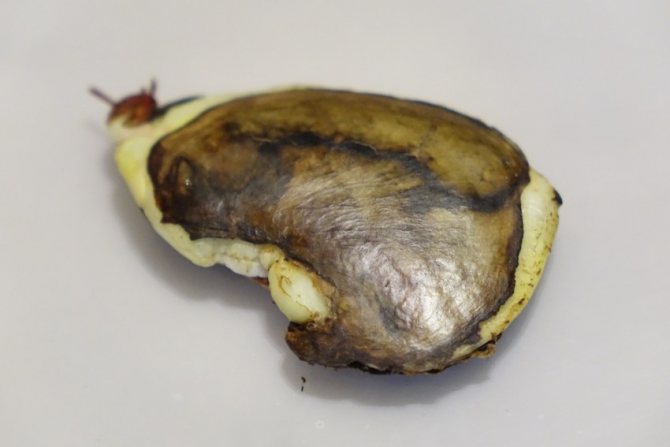
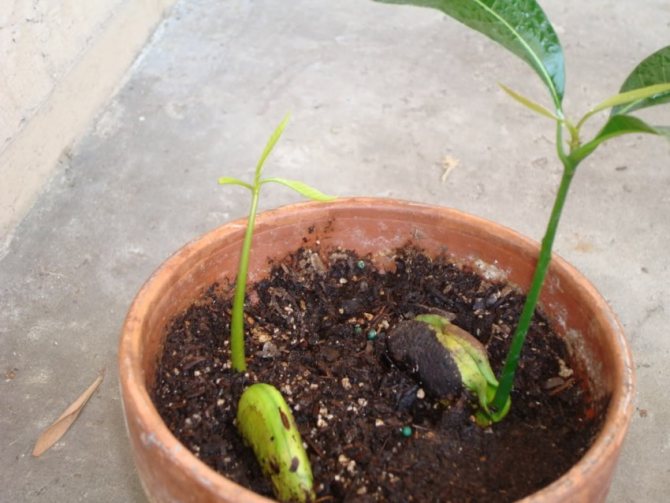
This method is also suitable: place the seed in a slightly damp towel, and then again in the warmth. When the embryo germinates, it can be planted in a pot.
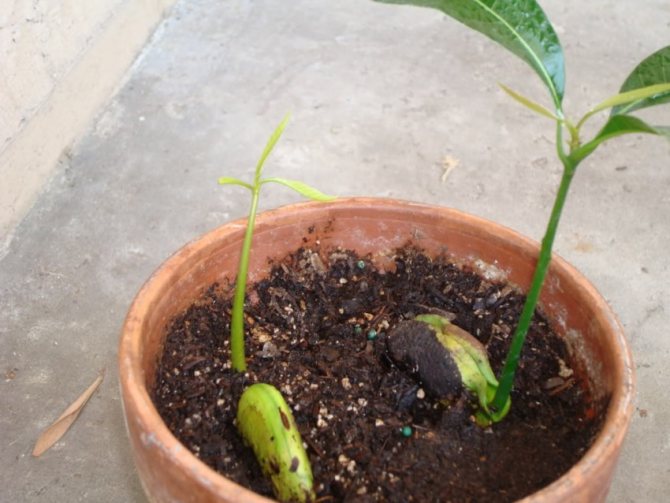

What if the seed doesn’t germinate?
If everything is done correctly, the conditions are met: temperature, humidity and lighting, then the seed should germinate. But this may not happen soon. Only if more than a month has passed after landing, then something has been made a mistake. It happens that the seed becomes moldy, the reason for this is the soil is too damp. Seeds that have not been peeled off can also become moldy.


Preparing the soil for the embryo
Before planting the seed, it is advisable to prepare the soil in advance and choose a spacious container. It is better to pick up a large pot right away so that the root system does not suffer. The bottom is laid out with drainage. The substrate is placed on top.
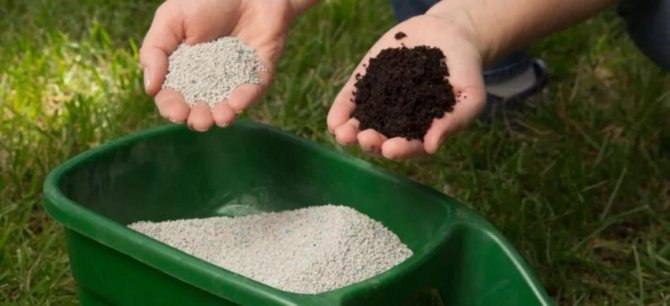

The soil is selected light, with a neutral pH level. You can also use a universal primer. Special devices will allow you to determine its acidity.
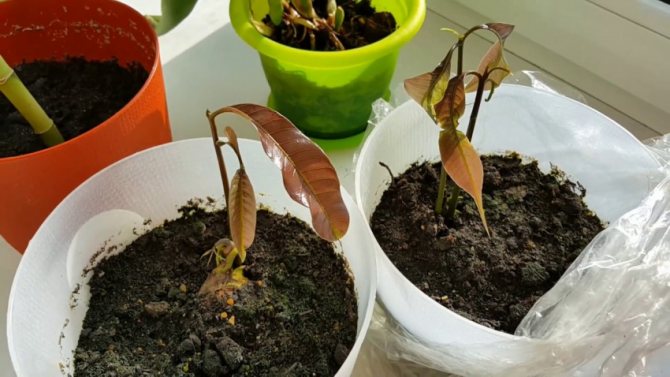

Landing
When the embryos appear, they can be transplanted into a pot. Before planting a mango seed, it is treated with growth stimulants. It can be planted sideways or horizontally if the sprout is already visible. But neither the embryos nor the bone can be completely covered with earth: a fourth part remains on the surface.

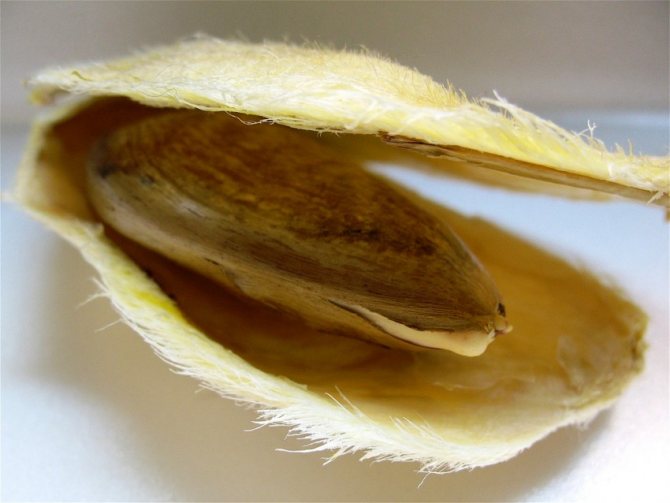
After planting, the seed should be sprayed with water at room temperature and covered with transparent plastic. Periodically, it is slightly raised – this is how airing is carried out.
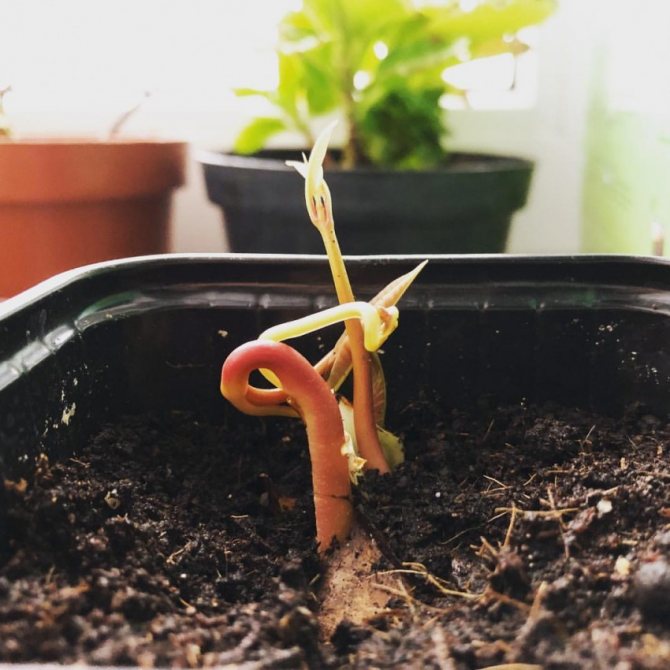
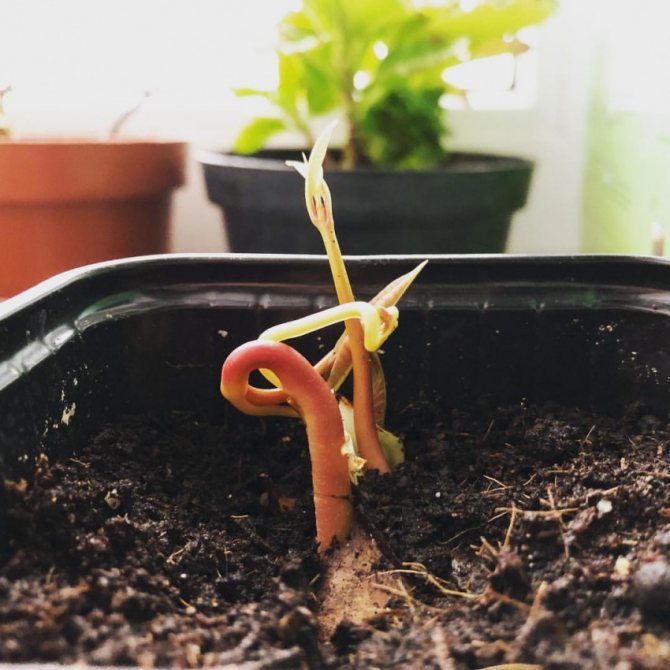
It is better to put the pot closer to the sunlight, and when sprouts appear, remove the cellophane from it. The future plant must be watered, protected from direct sunlight and the soil must be ventilated.

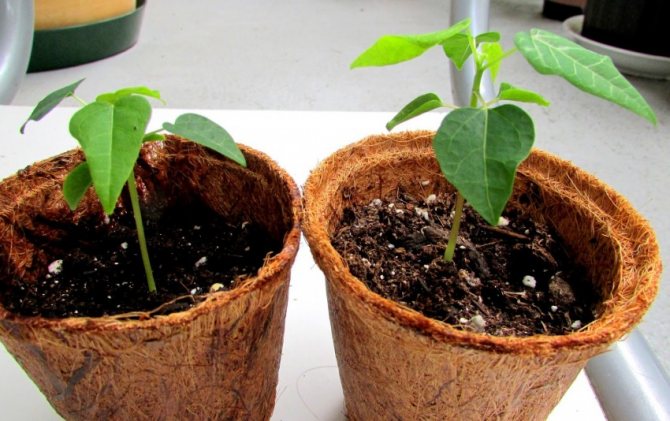
Recommendations for planting mango seeds
How to plant a mango seed at home and what is needed for this? First you need to purchase a ripe fruit. Soft to the touch, fragrant, and even better overripe with a bone that is easily separated from the pulp, but without spots and damage on the peel. From the seed of such a fruit, a sprout can ideally germinate.
When growing mangoes in an apartment, you must choose a place on the sunny side, where the temperature should always be +22 + 26oC, humidity 70 – 80% and sunny, as well as additional daylight lamps, light.
For landing you will need:
- Flower small pot with holes on the bottom
- Нож
- Ordinary flower soil
- Drainage (expanded clay or small pebbles)
- Fungicide
- Plastic container with lid
- Room temperature water
Do not choose a plastic pot, the root system of a mango is powerful and can destroy it. Ceramic and wood pots with a thick bottom work best. Choose a soil in flower shops that includes: a mixture of peat, turf and sand. The main thing is to be light, loose and sour (pH 4.0 – 5.5).
Young plant care rules
The mango tree is quivering and demanding. But caring for him is not very difficult. The main thing is timely watering with settled water, good illumination, and, if necessary, transplanting into a large container.
In winter, it is better to highlight the tree additionally.


Mango is not adapted to any climate change. Therefore, the room temperature is kept stable: 22-25 degrees. It is helpful to moisturize the leaves. But here you need to be careful, as fungus or mold can develop on them, which will destroy the tree.
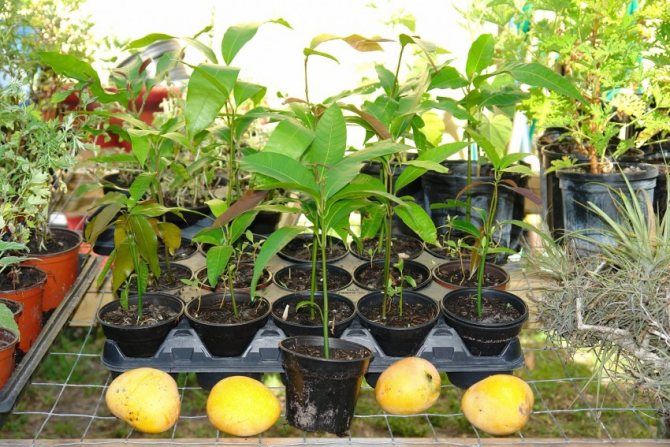
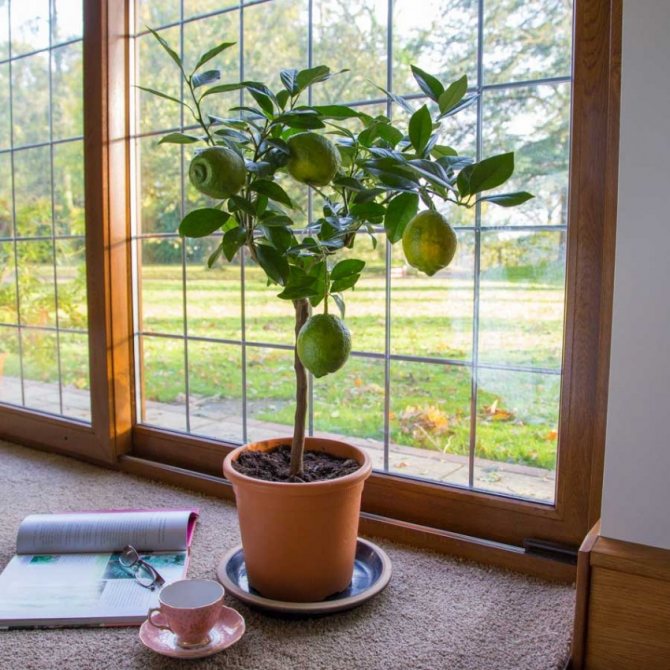
It is best to fertilize mango planted from a stone at home with vermicompost or nitrogen mixtures.

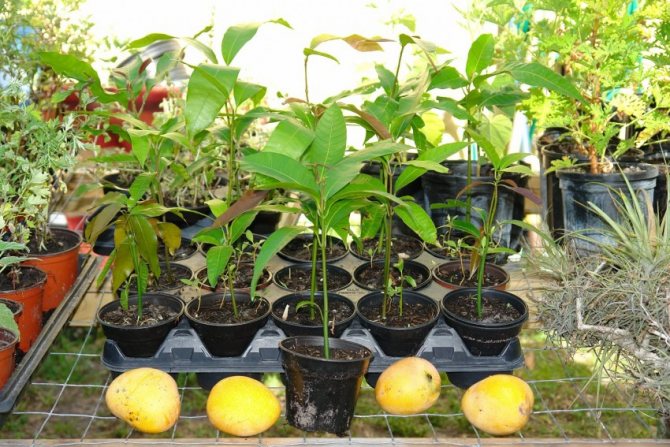
How to care for indoor mango
At the first stage of seed germination, the film is lifted every two days for airing so that there is no rotting of the planted material. When a sprout appears, the shelter is gradually removed so that the young tree receives enough air.
- Temperature. A tropical plant needs a sufficient amount of heat: the optimal mode is from + 23 ° С to + 25 ° С. When the temperature rises, the tree develops well, but needs active watering, but without acidification and waterlogging of the soil. Drought interferes with leaf ejection and flowering.
- Lighting. A lack of sunlight reduces the growth and development of mango trees. The plant is placed on a windowsill, where there is a lot of light, but scorching rays are a bad option for an immature tropical “inhabitant”.
- A suitable place is a high stand next to the window so that there is good illumination, but without the hot sun. In the warm season, a tree in a pot is placed on the balcony, be sure to monitor the ventilation of the area if the windows are glazed.
- Watering and humidity. Mango loves a sufficient amount of liquid: watering is carried out regularly, as the substrate dries. It is important to ensure that there is no stagnant water in the flowerpot: fungal diseases develop
- In the summer, it is allowed to spray a tropical specimen. Simulating warm rain has a positive effect on the growth of mangoes at home.
- Fertilizers and feeding. A small amount of humus is a suitable option for a mild, delicate agent for increasing the nutritional value of the soil. The second option for a grown tree is succinic acid for indoor plants. A small amount of organic matter or nitrogen fertilizer is applied every week. In flower shops, fertilizers for citrus fruits and palms are sold, the compositions have a positive effect on immunity, growth, the state of the stem and leaves of an exotic plant. In winter, mangoes are rarely fed – no more than once a month.
- Pruning and shaping the crown. The procedure is useful for the active growth of shoots. The formation of a beautiful crown is possible when some of the branches are removed once or twice a year. After pruning, the mango activates the growth of the side branches. Correct pruning will give the original plant a spherical or flatter shape.
If a florist has planted a tree in a summer cottage, and good conditions are created for the growth of a tropical specimen, then you can do without forming a crown, but hygienic pruning is mandatory. You can not leave sick, rotten, damaged shoots on a young or adult tree, taking away some of the juices and nutrients.
- Transfer. Experienced gardeners advise to plant the mango stone immediately in a sufficiently large container: a tropical plant does not like moving into new soil. It is important that there is enough space for the root system, otherwise the underground part of the plant will be weak, which will negatively affect the state of the exotic plant. Transplants are infrequent. It is important to focus on the remaining space in the root pot. The new container should be several centimeters larger, so that soon you will not have to transplant again with overgrown roots.
Important! Be sure to use the transshipment method with the preservation of the substrate on the roots. Do not disturb the earthy ball, rinse the roots, shake off soil particles: improper actions harm the plant.
Summer residents or owners of private houses often plant an exotic tree in the garden, provided that there is no sharp drop in temperature and frost in the region even in winter, otherwise the plant will die.
Care of a grown tree
When the first leaves appear on the seedling, you need to pinch the top, and at a height of 1.5 meters, it’s time to start forming the crown. Pruning is done in the spring, but the sturdiest branches should be kept.


So that the roots can grow and develop freely, after a year they change the pot to a more spacious one. The five-year-old mango tree is replanted every three years.


As you can see, it is quite possible to plant a mango at home. An exquisite plant will decorate your home.
But what about the fruits? Only grafted trees bought in the nursery bloom and delight with fruits. The grafting can be done independently, preferably in the spring, when the mango tree grows most intensively.
How to plant a mango?
To understand how to grow a mango in your home, you need to learn about its natural origins. The mango tree is native to India, from where it spread to East and South Asia, East Africa, the Spanish Canary Islands, Australia, and North America. More details about the origin and the fruit itself are written by M.S. Lyubavin under the guidance of the scientist I.K. Kutseva in the article “Growing Indian mango from seed.”
Growing a bright and fragrant fruit on your own is not so difficult, given some of the nuances:
How to plant a mango from a bone: preparation
Mango cultivation should start with preparation. First of all, I recommend acquiring planting material. But where can I get it? We do not live in the tropics, so there is no way to go to the jungle and find him. The best solution is to purchase the fruit from the store.
